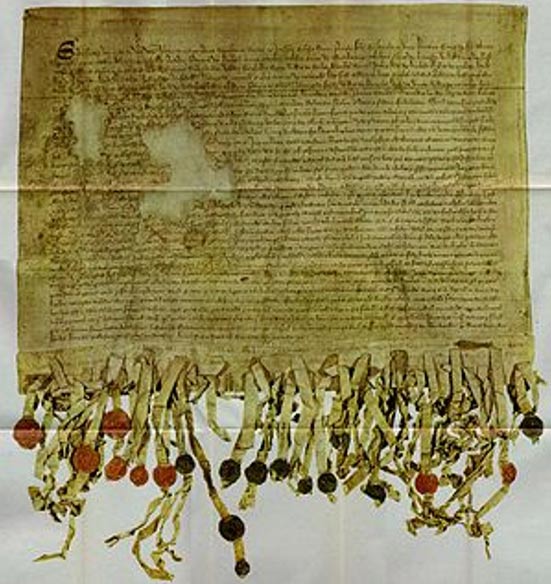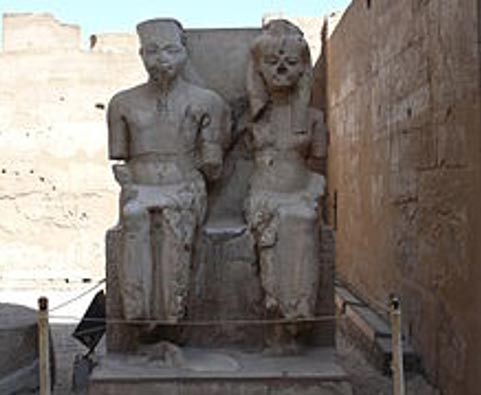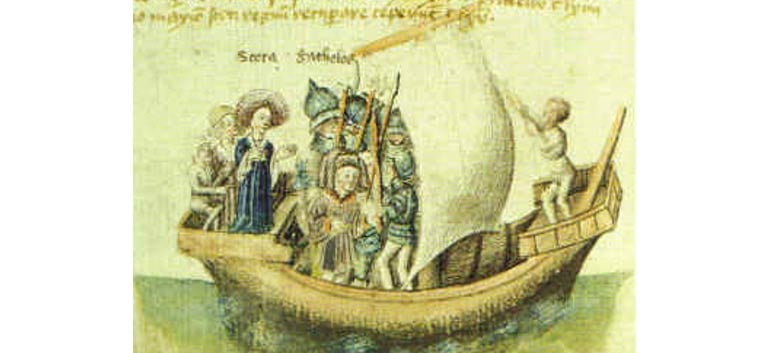Scota: Mother of Scotland and Daughter of a Pharaoh
During the 1440s, a Scottish chronicler, Walter Bower, sought to trace the history of the Scottish people from the earliest times. The result of his endeavour was the creation of a compendium of Scottish history, the Scotichronicon. Perhaps one of the most astonishing claims made by Bower in his Scotichronicon is that the Scottish people were actually descendants of the ancient Egyptians, and could trace their ancestry to the daughter of an Egyptian pharaoh, Scota.
The Moses Connection to Scota
The story of Scota begins with a Greek king by the name of Gaythelos. In one version of the story which involves Ireland, Gaythelos is known as Gaodhal Glas (the word ‘Gael’ is said to be derived from his name), and was originally from the region of Scythia. It is also said that Gaodhal Glas lived during the time of Moses, andthe latter is said to have cured the former when he was bitten by a serpent.
Gaodhal Glas was also promised by Moses that no serpent or other poisonous creature will inhabit the western island that his posterity would inhabit one day. One of Gaodhal Glas’ grandsons, Niul, was invited into Egypt as an instructor by a pharaoh, and eventually married one of his daughters, Scota (Both ‘Scotland’ and the Roman name for Ireland, ‘Scotia’, are said to be derived from her name).Niul and Scota’s people were later driven from Egypt by a later pharaoh, and wandered around the Mediterranean until they reached Spain.
- Have archaeologists found the last known witch grave in Scotland?
- Medieval mass grave lay hidden just two feet below a college in Scotland
- Together for two millennia: Iron Age burial containing father and son weavers unearthed in Scotland
- The Intriguing Carvings of Rosslyn Chapel
During the rule of Miled / Milesius (whose wife was incidentally also a pharaoh’s daughter by the name of Scota), these people heard about Ireland, and believed it to be the island foresaw by Moses. Although Miled died in Spain, his wife and children eventually reached and settled in Ireland.

Milesius and Scota (J. Fitzpatrick)
Irish and Scottish Origins Intertwine
This legendary origin of the Irish people is also shared by the Scots. For the Scots, however, the story did not end in Ireland. From Ireland, the descendants of Niul and Scota travelled to the west coast of Scotland, battled and defeated the Picts, and became the Scottish people. This version of Scottish lineage can also be found in the Declaration of Arbroath, an important document written in 1320 by the barons and noblemen of Scotland requesting the intervention of the Pope on their behalf during the Wars of Independence. In the second paragraph of the document, it is written:
Most Holy Father, we know and from the chronicles and books of the ancients we find that among other famous nations our own, the Scots, has been graced with widespread renown. It journeyed from Greater Scythia by way of the Tyrrhenian Sea and the Pillars of Hercules, and dwelt for a long course of time in Spain among the most savage peoples, but nowhere could it be subdued by any people, however barbarous. Thence it came, twelve hundred years after the people of Israel crossed the Red Sea, to its home in the west where it still lives today.

The Tyninghame Copy of the Declaration of Arbroath (1320) (Wikimedia Commons)
Scota by Another Name
Not everyone agrees that the Scots originated from Scythia, however. One writer, for instance, speculated that Gaythelos / Gaodhal Glas was neither a Greek king, nor a Scythian, but an Egyptian pharaoh himself. In Scota, Egyptian Queen of the Scots, Ralph Ellis traces the story of Scota and Gaythelos to a 3rd century BC source, Manetho’s Aegyptiaca.
- Cremated bones in 4000-year-old cist burial found hanging from Scottish cliff
- The Thirteen Legendary Treasures of Britain
- Viking beaters: Scots and Irish may have settled Iceland a century before Norsemen
- Pilot of Passenger Plane reports near-miss with UFO over Glasgow, Scotland
Using this ancient source, it has been argued that Scota was actually Ankhesenamun, the widow of Tutankhamen. Gaythelos, on the other hand, has been argued to be Ay, the successor, and according to Ellis, also the father of Tutankhamen. Due to religious conflict, Ay’s reign was cut short, and the pharaoh and his court were soon forced into exile. Like the Irish legends, Ay and Ankhesenamun wandered around before settling in Spain. Several generations later, there was a migration to Ireland, and thence to Scotland.

Statue of Tutankhamen and Ankhesenamun, Luxor, Egypt. (Wikimedia Commons)
Featured image: A 15th century depiction of Scota’s voyage from Egypt. (Wikimedia Commons)
By Ḏḥwty
References
Ellis, R., 2006. Scota, Egyptian Queen of the Scots. Cheshire: Edfu Books.
MacManus, S., 2005. The Story of the Irish Race. New York: Cosimo.
The National Records of Scotland , 2012. Feature: the Declaration of Arbroath, 6 April 1320. [Online]
Available at: http://www.nas.gov.uk/about/090401.asp
The Scotsman, 2006. The pharaoh's daughter who was the mother of all Scots. [Online]
Available at: http://www.scotsman.com/news/the-pharaoh-s-daughter-who-was-the-mother-of-all-scots-1-466985




















Comments
Thanks to early Christian leaders distorting celtic mythology so thoroughly we can't even make comparisons to the large part of both cultures' religions
New DNA Evidence: https://www.bbc.com/news/science-environment-47938188
From the article:
"The ancestors of the people who built Stonehenge travelled west across the Mediterranean before reaching Britain, a study has shown.
Researchers compared DNA extracted from Neolithic human remains found across Britain with that of people alive at the same time in Europe.
The Neolithic inhabitants were descended from populations originating in Anatolia (modern Turkey) that moved to Iberia before heading north."
With all the DNA evidence that is available, it shouldnt be too hard to prove whether or not there was an influx of Egyptians during biblical times.
Does anyone know if any DNA research has been done in this area?
Foresaw is the present tense. Foreseen is the word you want.
If you contact
[email protected]
the webmaster will sort it out for you.
Pages